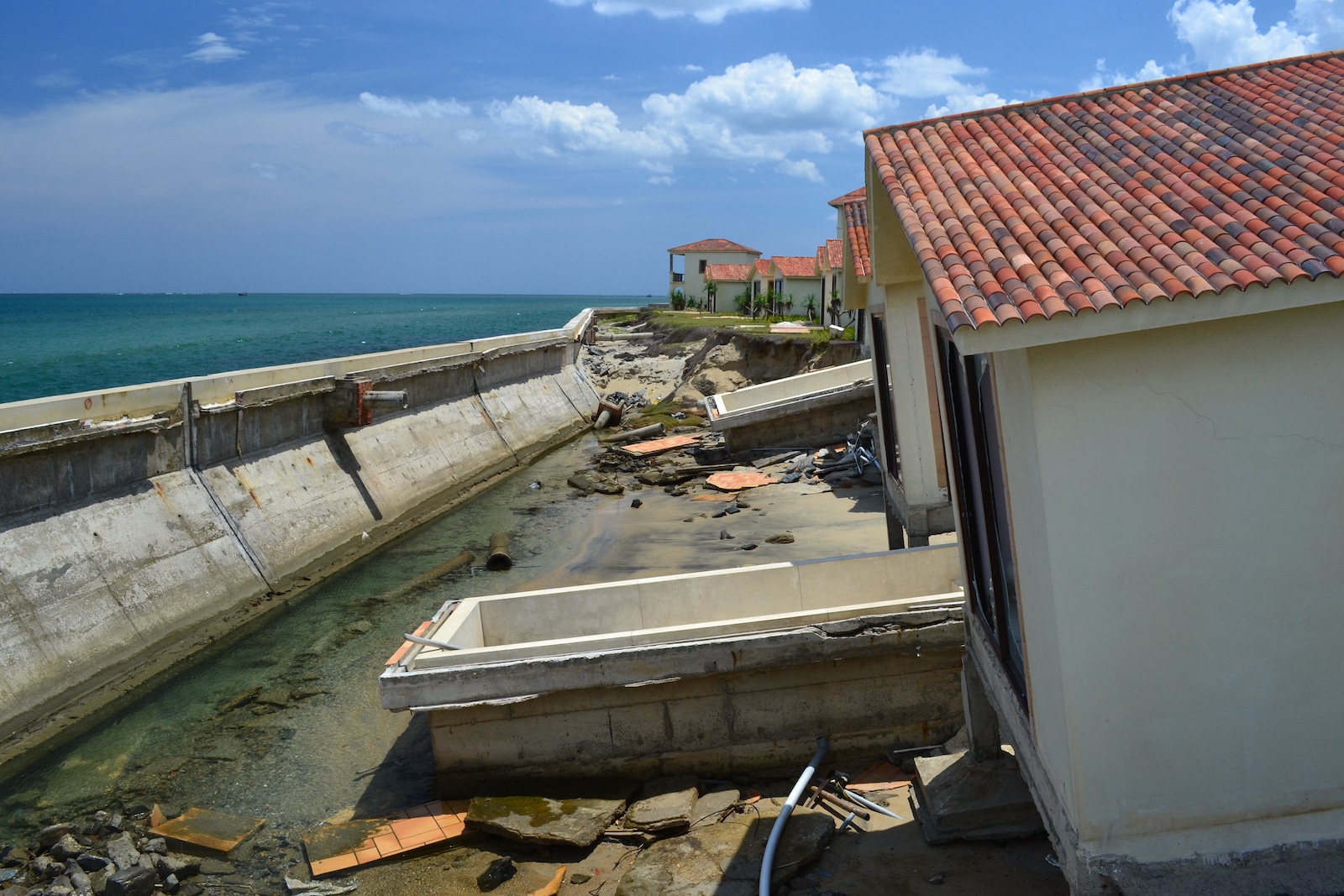Aside from its endless gorgeous scenery and diverse culture, Vietnam is prone to experiencing a few kinds of natural disasters. Even though these events usually happen during particular seasons and regions, it’s a good idea to be aware of the types of extreme weather that can be disruptive and happen during your travels.
Nestled in southeastern Asia, Vietnam resides in both sub-tropical and tropical climates. The weather is typically hot and humid, although there are some mountain regions that cool down. Rain is often a daily occurrence, specially during the monsoon season. Let’s look at some of the other natural disasters found here, in no particular order:
Typhoons

Vietnam is prone to getting tropical cyclones, also known as typhoons, and averages roughly five storms of this kind per year. Typhoon season varies across the country. In the northeast, the months most likely to get hit with a typhoon are October through March, while the central coastline’s is August through November, and the southwest’s timeframe is April to September.
During a storm, strong winds and heavy amounts of rainfall happen within a short amount of time, making the country vulnerable to flooding and delaying transportation on both land and sea.
Because Vietnam has a lot of agricultural businesses, typhoons can be incredibly destructive to this industry. In 1997, Typhoon Linda, known as the worst typhoon in Vietnam’s history, took the lives of over 3,500 people.
October 2020 was another rough time period for typhoons in Vietnam, as the country was hit with several storms within just a few weeks, causing destruction, death, and the worst flooding that Vietnam had seen in decades.
Floods

The torrential rains in Vietnam, often caused by tropical storms, can sometimes last for long periods, creating devastating floods and landslides. The heavy rainfall can aggressively take over many towns and villages, sweeping away people and livestock to their deaths.
Additionally, the high water level can force its way through many homes and either break them down to ruins or cause so much unrepairable damage and rot within buildings’ foundations. Large amounts of water that doesn’t get removed or drained also make disease from the bacteria in the water more likely.
In October and November 2020, Vietnam saw record flooding throughout the country, especially in the central region that suffered catastrophic landslides and rapids that swallowed homes. Millions of people, including children, were left homeless and at risk of poor nutrition as the villages and towns recovered.
In August 2012, Typhoon Kai-Tak was responsible for claiming 27 lives and creating flooding that caused nearly 12,000 homes to be cleared away by rushing waters.
Hailstorms
When a cold front hits the top of Vietnam, it can create some intense weather systems that are dangerous and devastating. Hailstorms typically occur in the northern provinces such as Son La, Ha Giang, Lai Chau, and Yen Bai. When they happen, the hail can be incredibly damaging, especially to houses and crops, as they’ve been known to destroy fields of corn and several fruit trees.
In March 2013, a 20-minute hail storm in the Lao Cai province damaged over 10,000 houses and injured about three dozen people. Several others were left displaced with homes that had been destroyed. In the fall of 2006, another hail storm managed to sink several boats and kill several people in the Quang Ninh province.
Tornados
Storms with high and robust winds can happen in Vietnam, creating a raging tornado among heavy rainfall. Even though you might not associate tornados with a country like this one, they do occur and can have terrible aftermaths.
In June 2020, a tornado ripped through the Vinh Phuc province and killed three people while injuring 18 others working at a wood processing factory. In April of 2007, Vietnam got hit with three tornados within just two weeks, resulting in several people’s deaths, also damaging 300 homes in the Ca Mau province.
Earthquakes
Earthquakes don’t happen too often in Vietnam, but they do show up on rare occasions. The majority of earthquakes that have occurred are on the mild side of the spectrum; however, there have been a handful that shook up the nation.
In November 2001, a quake with a 5.5 magnitude hit southern Vietnam and killed one person, who suffered a head injury from a piece of debris that fell. Residents were shocked by the disaster, and many opted to stay outdoors to avoid any trouble with aftershocks throughout the night.
While traveling in Vietnam, it’s essential to stay informed on local weather predictions of the places you’re visiting. Follow the news, and form an emergency plan if you need to evacuate. Should a flood happen, seek higher ground, and if a tornado warning appears, look for shelter underground if possible.


 Bich Dong Pagoda – Ninh Binh City
Bich Dong Pagoda – Ninh Binh City